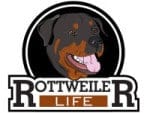The Rottweiler breed, native of Germany, is a well-muscled, broad-chested large working dog. They have a fierce exterior and are quite capable of heavy work. Rottweilers were originally draught dogs, driving butchers’ carts to the markets. However, this definition of their appearance is not enough. If you want to know what a well-bred rottweiler should look like, you can follow the Rottweiler breed standard of Germany produced by an eminent Club called the Allegmeiner Deutscher Rottweiler Klub (ADRK).
This popular breed has a history of being bred for money in puppy mills. These irresponsible breeders produced many Rottweilers who didn’t adhere to the breed standards. The dog breed earned a bad name for its aggressiveness and hostility even though it was largely owing to the lack of care and training provided by irresponsible breeders.
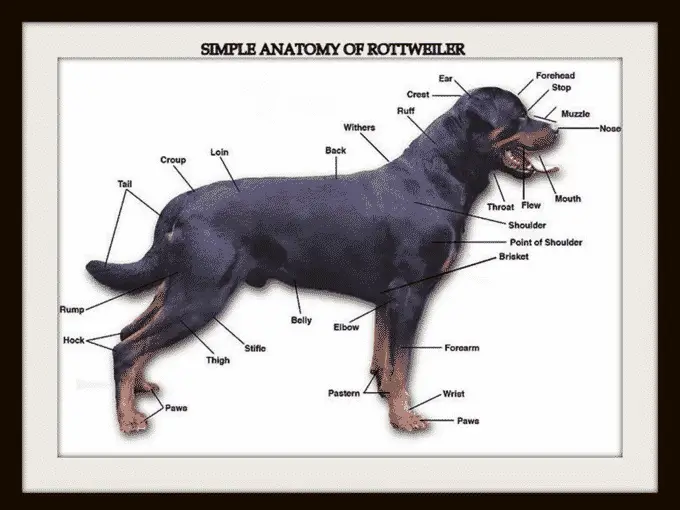
Therefore a Rottweiler breed standard is quite essential. Potential Rottweiler parents can refer to such breed standards before adopting their pets. You can also get an idea if your rottweiler buddy is of the correct size, color or, structure.
The German Breed standard is almost like a blueprint of the Rottweiler breed. However, following the Germans, many countries now have their own Rottweiler breed standards. Some of them differ in their description of the breed characteristics and appearance from the ADRK one. But that is because the breed underwent several changes as it was taken to different countries bred there. The conditions of the place impacted the breed’s natural features and thereby led to such minor changes. The overall breed standard remains the same.
The above picture is a portrayal of a pedigree rottweiler. It’s a handsome prototype of the breed. You can’t judge his temperament from the picture, but we’ll get into that in detail in a while.
So if you want an accurate picture of the Rottweiler breed, read on.
This article gives you an in-depth description of a Rottweiler’s general character and appearance, its size, physical features, coat and color, temperament, movement, and bonus breed standard information at the end.
Rottweiler Breed Standard: General Appearance And Character
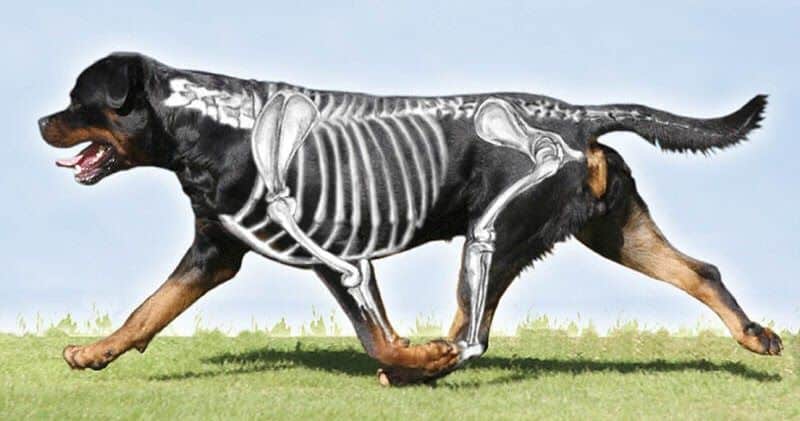
According to ADRK, a Rottweiler has a powerful build that gives out the image of a stalwart dog. The important thing to remember is that this breed is neither weedy nor leggy. It has a balanced, proportionate body that speaks of its agility and strength.
The AKC (US breed standard) description is also the same in the case of a rottweiler. The ideal breed is black with rust markings at the edges.
Dogs are more massive in structure and shape. They have a broader chest frame and heavier bone structure. Bitches, however, have a distinct difference. But they do not possess a weaker structure or frame. Their bodies are equally robust but have a feminine touch.
Size, Substance, Proportion
In case of the size, the ADRK issues a detailed rottweiler breed standard. The height measurement of a quadruped is typically taken from the highest shoulder blade down to the paws. This withers height of a male rottweiler ranges from 61 – 68cm. 65/66cm is considered to be the ideal height. Anything below that is small and anything above is considered to be large is the case of the rottweiler breed.
In the case of bitches, the height ranges from 56 – 63cm, where 60/61cm is considered to be the correct height.
The approximate weight of males is 50kgs and for females is 42kgs.
An important note by ADRK states that for an ideal breed, the body length from sternum to the dog’s ischiatic tuberosity shouldn’t exceed the withers height beyond 15%.
The ASK marks the ideal height of dogs at 24 – 27 inches and bitches at 22 – 25 inches. The ideal breed of a rottweiler in the US is a medium-sized one. It is essential for a standard rottweiler to be of the correct proportion. It has already been mentioned that the length is slightly longer than the withers height in the case of a rottweiler. The most preferred proportion therefore is, height : length :: 9: 10.
Being a breed with a strong and broad framework, the muscle mass and bones should be able to balance his frame to give a compact look to a rottweiler.
Head, Neck, Topline
The skull shape of a rottweiler is best understood when seen from the sides. It is of medium length and broader near the ears. The shape is not round but broad. As per the AKC, the ideal ratio of muzzle and back skull is 2 to 3. Rottweilers have arched foreheads which may appear wrinkled when the dog is on guard or in an alert mode.
It has black nostrils with a broad nose. The foreface doesn’t usually appear elongated or shortened. A rottweiler has medium-sized eyes in the shape of an almond. The lids are well-fitted and deep-set. The desired color of the eyes is dark brown. It has a broad and strong jaw with 42 teeth in a scissor bite fitting. The lips are close-fitted with a dark gum. The zygomatic arches near the cheeks are well pronounced. It has triangular ears always set on high because the breed is always on alert.
In the case of expression, a rottweiler is always confident. It is never shy or meek. And most importantly, it never lets its guard down. Therefore their expression is always self-assured, noble, and alert.
In the case of the topline, a rottweiler’s back is level and firm and moves in a straight line from the shoulders to the rear bones. The standing posture of this dog shows its strength and power. It’s also a confident dog with a powerful neck. The neckline, however, is not long but moderate without loose skin.
Forequarters, Trunk, Hindquarters
A standard breed rottweiler has a broad and roomy chest. The overall physical features are well pronounced, deep and muscular. The forechest is set with oval ribs. Other body features are:
Back- strong and straight
Loin- deep, short, well-muscled
Croup- medium length, broad and slightly sloping
The Rottweiler breed standard lays out that the front legs of a Rottie are set apart and straight. The shoulder blades are sloping at 45 degrees, ideally. Other features include:
Shoulders- laid back
Pasterns- springy, strong, perpendicular to the ground
Front feet- round, well-arched, well-padded, tight and hard
Nails- black and short
The hind legs are set way apart to balance the heavy built body of a rottweiler. The feet are longer than the front paws. The hind features are typically broader to form a base for the entire body and balance out the muscled framework.
Rottweilers have docked tails. The length of the tail is short but the set of the tail gives out the image as if it is an extended portion of the topline. The tail generally remains down or horizontal. But when a rottweiler is excited or moving, the tail moves slightly upwards.
Rottweiler Breed Standard: Gait, Movement
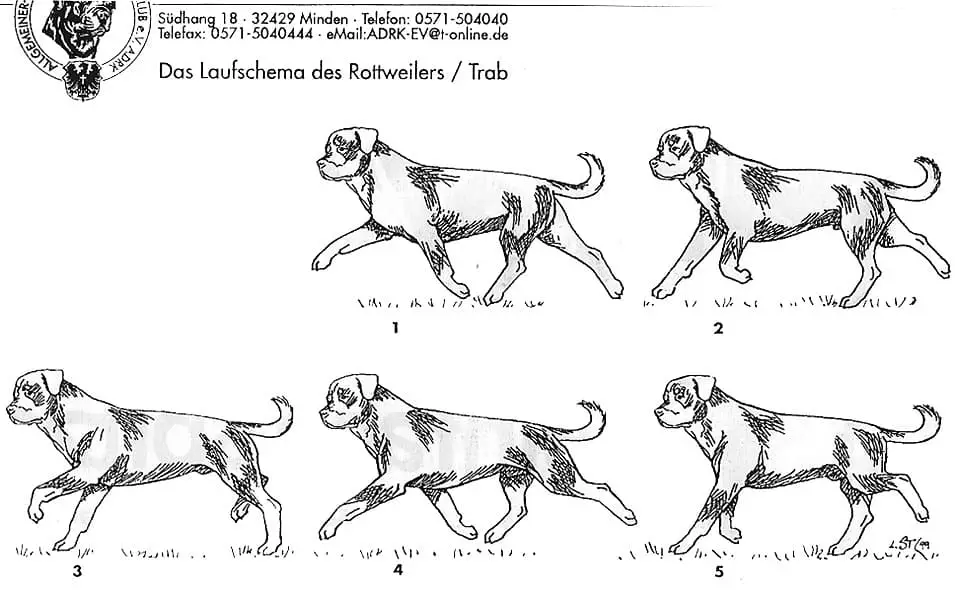
Rottweilers are not racers. They are usually trotting dogs. Therefore, during movement, the back of a rottweiler remains firm and stable. There is uniformity in their movement. They are steady, energetic and, powerful dogs. The personality of a rottweiler becomes clear from its movement. They have a strong fore-reach and a powerful rear movement. They seem sure-footed and confident in their stride. Their movement seems ground-covering.
When they are trotting, the hind and forequarters are leveled and coordinated. But when they are running, their legs seem to converge under their body almost aligning with the center bodyline.
Coat and Color
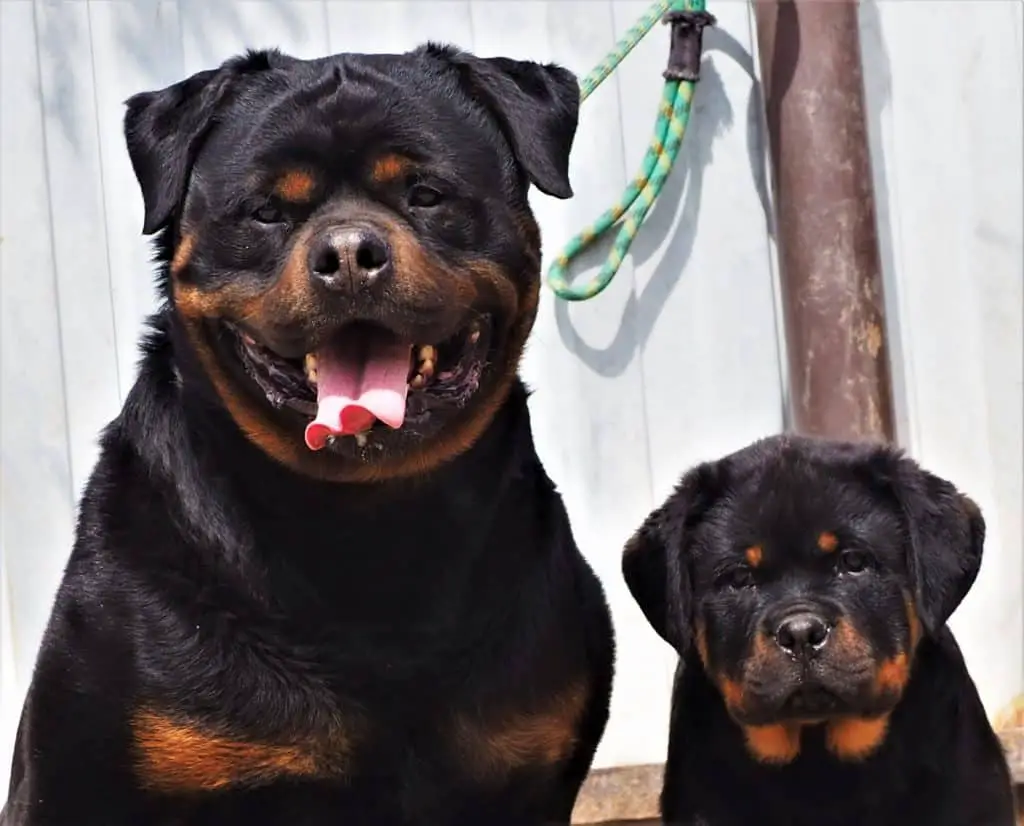
A standard rottweiler has two coats, topcoat and undercoat. Rottweilers are not a hairy breed. They have a medium length top coat which is also coarse and dense. Other than that, the undercoat lies majorly on the thighs and neck. The undercoat is thicker and longer near the hind legs. It is always gray, black or tan.
One important detail for a standard rottweiler is that the undercoat should not show through the top coat. Trimming is not required in case a rottweiler. They have dense and coarse hair-coats which are recommended not to be trimmed.
A rottweiler is always black without exception. Their markings, however, can range from a deep mahogany color to rust. The demarcation between the body markings and the general color is clearly defined.
There are moreover, specific spots which have markings. These spots may vary from each rottweiler to the other but the general spots remain the same. They are usually located over the eyes, on cheeks, on the throat, never on the bridge of the nose but can be present near the muzzle. Other parts that usually carry the marks are triangular marks on the prosternum, on the inside of each rear leg, on forelegs, or under the tail. The paws can also have rust or mahogany color but with black pencil patterns drawn on them.
Rottweiler Temperament
Rottweilers are always on alert. They have a confident look. They like to remain aloof. Rotties are a generally calm breed with a courageous and self-sure look. Rottweilers take time to make friends. They need early socialization so that they grow up to be friendly beings. However, they never let go of their wait-and-see attitude. They are not the deal beings for immediate friendships.
A rottweiler has a fiercely protective nature. They will do anything to guard their own. They don’t welcome newcomers easily and take time to trust them. A well-bred Rottweiler is silent if not provoked. They are intelligent creatures who are easy to train. They are a loyal and faithful breed. Rotties have a confident personality and are never shy or timid. They may stay away and not sometimes the cuddly breed, but they will protect you with their life.
The Rottweiler breed standard of Germany and other countries consider this breed to be ideal companions and guards. Their sturdy exterior and always-on-guard nature makes them the best of guard dogs.
This breed never shies away from work. Originally belonging to the ‘working dogs’ category, they are always willing to work and remain in the best of their health when they are working. Sitting idle makes them cranky and violent.
The training phase of a rottweiler is extremely crucial as it determines which way you guide their personality. Being fiercely protective creatures, they can also become big bullies when they grow up. Being skeptical of others, they might not be accommodating of other creatures or humans other than their family. To bring out the positive qualities of a rottweiler, training using positive reinforcements is extremely crucial.
Disqualifying Faults
If you’re looking at a rottweiler’s standard breed information, there are a lot of features that will exclude a certain rottweiler from the category. Some of these disqualifying features are as follows:
Feminine dogs and masculine bitches which show a reversal of the sex, dogs without the usual black with tan markings, dogs with kink or ring tail, long coat, dogs with a wry mouth, differently colored eyes such as ectropian, entropian etc, dogs with lack of an incisive tooth, or dogs with an undershot or overshot bite etc, are considered to be faulty rottweilers and are not considered to fall under standard rottweiler breed.
Moreover, behavioral differences are also considered as faults. For example, rottweilers which are shy, cowardly or anxious are anomalies in the rottweiler breed. Well-bred rottweilers are not nervous creatures. Rottweilers that are excessively vicious or aggressive are also considered to be peculiar breeds.
More Information on Rottweiler Breed Standard
Rottweilers are a widely misunderstood breed. They have been portrayed as aggressive and hostile for a long time. Rottweilers are loyal companions. They are intelligent beings who have intense emotions for their own or adopted family. The above information is only excerpts from the ADRK and AKC and are not complete portrayals of the breed.
However, it is important to note the behavioral and temperamental features of a rottweiler because they have been widely misinterpreted. A Rottweiler is not considered to be a standard one if it is vicious or extremely aggressive. Poorly bred rottweilers showcase these qualities.
There are a lot of poorly bred rottweilers in the market today who are far from the standard image of a rottweiler chalked down by eminent international Clubs. It’s, therefore, crucial to get a clear picture of Rottweiler standard breed information.
Read and let us know if this was helpful for you.

